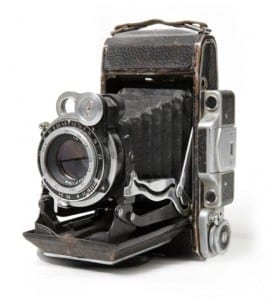After a Utah Car Accident: The Value of a Police Report
Let’s say that you’re driving to an appointment down a busy surface street and for a reason unknown to you, traffic comes to a stop. While you’re waiting for the cars to begin moving again, the driver of the vehicle behind yours notices the slowdown a little too late and screeches to a halt. Unfortunately, despite the fact that he slammed on his brakes, he still ends up rear-ending your car although the damage is, in your estimation, not too bad. Owing to the backup in traffic, the fact that you’re in a hurry, and that the damage appears to be minimal, should you call the police?
The answer is yes, you should call the police despite thinking you shouldn’t. The “minimal damage” scenario is the most common reason we hear when we learn that the police weren’t called to the scene of an accident. Basically, people don’t call the police because they think that their accident is not worth the officers’ time. We respectfully disagree. Calling the police to the scene of the accident will help you later because the report that is generated lists all of the parties involved, verifies insurance coverage, describes the accident conditions, and often designates the at-fault driver(s).
Who was involved? A police report is a document where all of the information about an accident is recorded. The investigating officer(s) will gather the names, ages, and contact information of each person—including passengers—involved in the crash. If witnesses are around, they may be interviewed and often are asked to fill out a separate witness statement wherein they write what they observed.
Obtaining verification of driver license and insurance coverage is another reason to call the police. As the officer gets the names and contact information of each of the involved parties, he or she also verifies that each driver has a valid driver license and the required automobile insurance. If the investigation reveals that someone’s license is not valid or a vehicle is not properly insured, appropriate action and penalties are initiated by the officer. The license plate and Vehicle Identification Number (VIN) of each involved car are also recorded in the report.
A description of accident conditions is yet another valuable result of having a police report. Not only does the report give a description of the vehicles, but it also is the repository of specific facts about the accident. For example, the police report includes documentation of weather and road conditions, road hazards, the date and time of day that the accident took place, the speed limit, and the estimated speed of the vehicles involved at the time of impact. The report further has a place for a diagram of the accident scene. The officer can manually draw out the scene and include a caption of the description of the accident below the diagram. This description essentially becomes a synopsis of the events leading up to the crash; it also shows a diagram of where the vehicles involved came to rest after impact. Sometimes photographs are taken by the officer at the scene and those, too, are included in the police report.
Who was the at-fault party? Most of the time the police report description assigns fault to a specific party or parties. If specific traffic laws were violated, they are listed and a description is given as to who was cited or given a ticket for causing an accident. These valuable details are considered by insurance adjusters when determining liability.
We recommend that you get a copy of the police report after an accident and keep it for your records. It is usually available from the police or highway patrol department five to seven days after an accident. You will be charged a small fee for the copy.
If you or someone you know was involved in a vehicle accident and needs help obtaining a copy of the police report, contact our office at (435) 673-9990 for a free consultation. We are familiar with the importance of this document and can order one for our clients.
At McMullin Injury Law we are… In Your Community and On Your Side.




